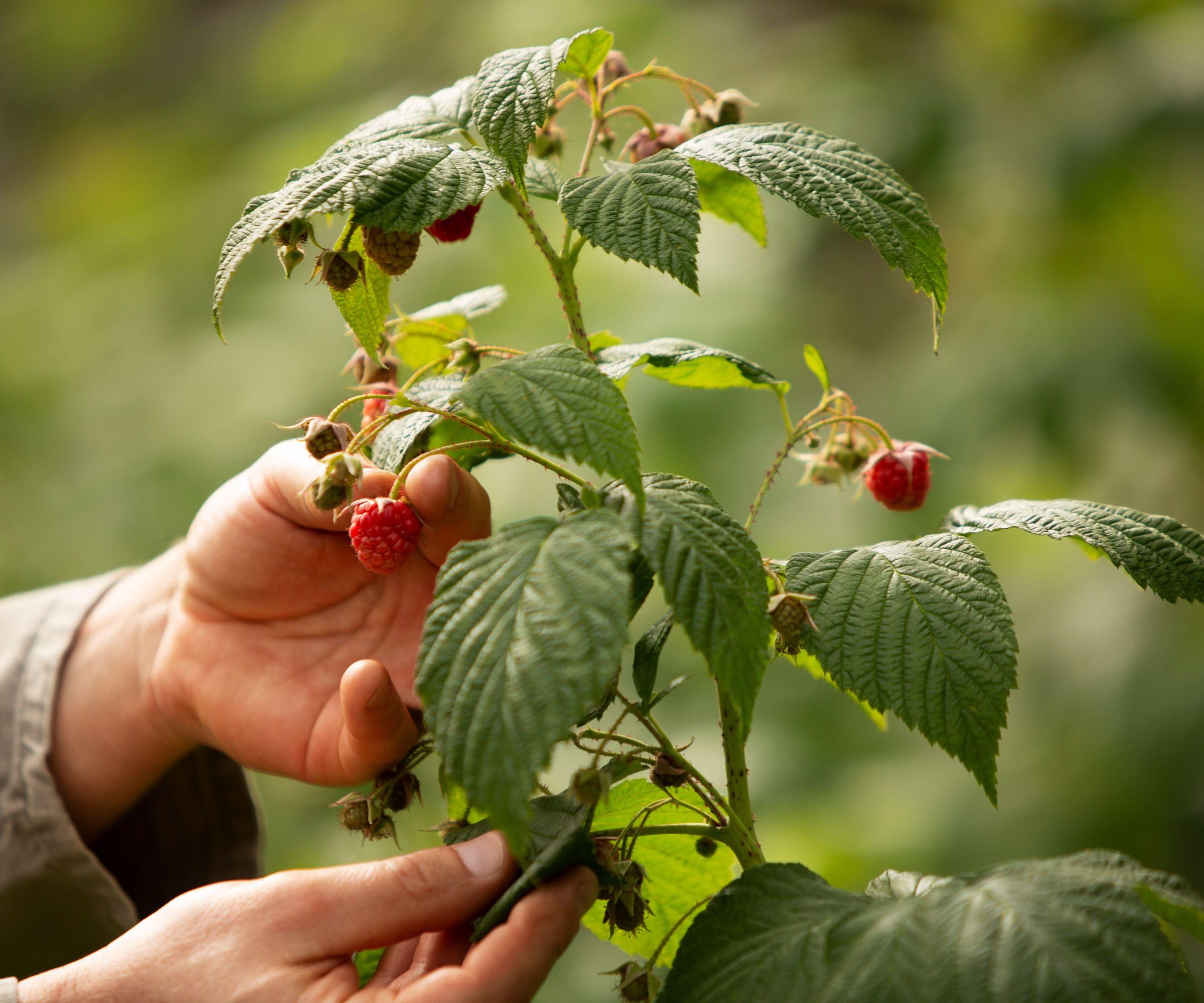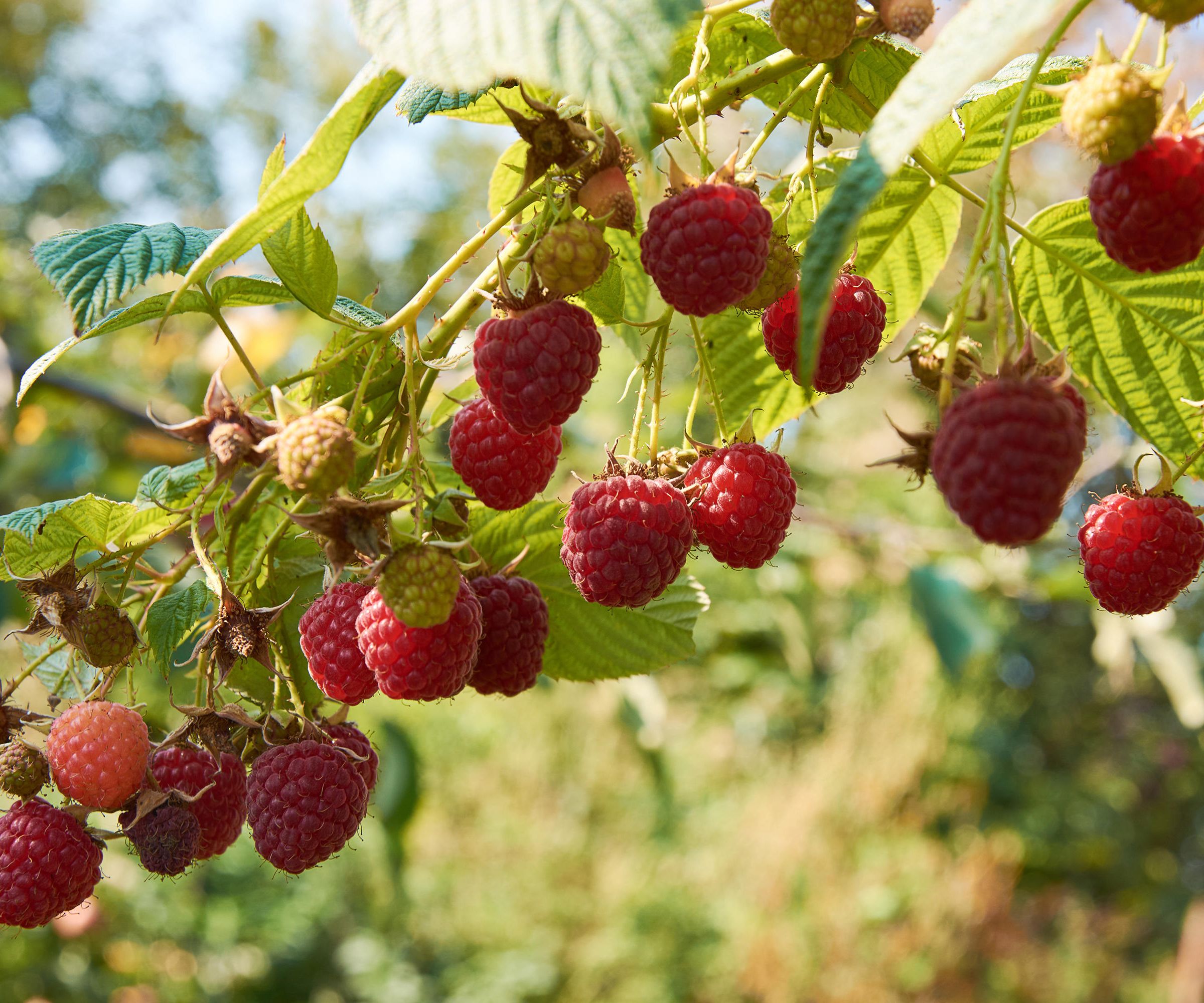
Although raspberries are thought to be one of the easiest fruits to grow at home, it's not uncommon to struggle to get a harvest. But, a few adjustments can quickly help you get a raspberry plant to fruit.
Knowing how to grow raspberries involves being aware of the environment they need in order to thrive, which ultimately improves chances of fruiting. This includes choosing a sunny position, providing enough nutrients, and even just understanding which variety you have, as different ones have slightly different fruiting patterns.
A lack of knowledge about this often results in gardeners having a leafy plant with no fruit, even when growing raspberries in pots. But, don't fret. Here, I share a few tricks to get your raspberry plant to fruit, with insights from a fruit growing expert.

3 ways to get a raspberry plant to fruit
Of course, before even getting to fruiting, you need to make sure you've planted your raspberry plant correctly. This includes getting the timing right, usually in fall or spring, but it's best to research the specifics for the varieties you're growing.
Likewise, different varieties will suit different US hardiness zones, so it's important to choose the right one for your yard – explore the raspberry plants at Nature Hills.
1. Identify which raspberry variety you have

It may surprise you to learn that not all raspberry plants fruit at the same time, an essential to understand when trying to get a raspberry plant to fruit.
'Some will fruit only once, in early summer, and others will set fruit twice in a season, the second time being in fall' explains gardening expert Annette Hird.
Some varieties that fruit twice include 'Crimson Giant' (plant available at Burpee). This is also known as 'everbearing,' a term to look out for when you want to select a raspberry plant that fruits twice in the season.
'The variety determines how raspberry pruning is carried out when the plants are dormant, and if this is done incorrectly, it can affect fruiting,' Annette notes. 'Some varieties fruit in new season canes (the woody stems of these plants), while others will fruit on canes that grew in the previous season,' she explains.
So, if your raspberry isn't fruiting, it may just be that it isn't time for it to fruit. Or, you may have made a pruning mistake, for example by pruning away a cane from last year that your raspberry needs to set fruit this year.
To resolve this issue, research your type of raspberry plant, its fruiting time, and pruning needs. And when it does come to pruning, always use clean, sharp tools, like these Fiskars pruning shears from Amazon.
2. Your raspberry plant needs direct sun

Just like getting a blueberry bush to fruit, raspberries need plenty of sun to support healthy fruit production. Too little sun will hinder your raspberry plant's ability to carry out key plant processes that lead to fruit development.
'Like most fruiting plants, raspberries need plenty of sun and adequate water to produce fruit, but good drainage is essential. In fact, if they don't receive at least six hours of sun daily, this can reduce fruiting,' says Annette.
If your raspberry plant is in a pot, it's easy enough to relocate it to a sunnier spot. But, if your raspberry plant is in a more permanent position, you may need to turn to other methods to increase sun exposure.
This includes pruning tree branches of neighboring plants that may be casting shade on your raspberry plant. You can also prune higher raspberry stems that are blocking light to the lower stems.
If you're growing raspberries indoors, you can employ the help of grow lights. This full spectrum grow light from Amazon even has a timer function, so you can set it to come on for six hours a day.
3. Your raspberry plant needs a boost of nutrients

If you're doing everything right in raspberry plant care but you're still having no luck with fruit, it might just be that you need to fertilize your raspberries. Like fruit trees, brambles use up nutrients quickly and require regular feeding to ensure they receive sufficient essential plant nutrients to aid fruit production.
'They also benefit from a good fertilizer that contains greater amounts of potassium and phosphorus, rather than an overload of nitrogen. But, you can get away with a balanced feed, or use compost,' Annette says.
Plant fertilizer numbers (NPK) will indicate the ratio of potassium and phosphorus, both of which are needed for flowering and fruiting, while nitrogen focuses on vegetative growth.
A berry fertilizer (from Amazon) is a good choice, or as Annette notes, you can use homemade compost for a more organic route.
Spring is a crucial time to fertilize raspberries, when they're beginning to actively grow. A slow-release granular fertilizer (from Amazon) is also a popular choice, providing the plant with a gradual release of nutrients over a longer period through the growing season.
FAQs
How old do raspberry plants have to be before fruiting?
Depending on the variety, raspberry plants can fruit in their first or second year. Summer-fruiting varieties typically fruit on last year's growth, meaning they will fruit in their second year. Autumn-fruiting varieties tend to fruit on this year's growth, so it is possible for them to fruit in the first year.
Making these adjustments can help you to get a raspberry plant to fruit, but you also need to get some other things right. This includes transplanting raspberries at the right time. Too early may shock seedlings, hindering the plant's ability to establish well and support fruit production later on.
Shop raspberry growing essentials
These raspberry seeds are non-GMO and ready for planting. This packet contains 200+ seeds.







